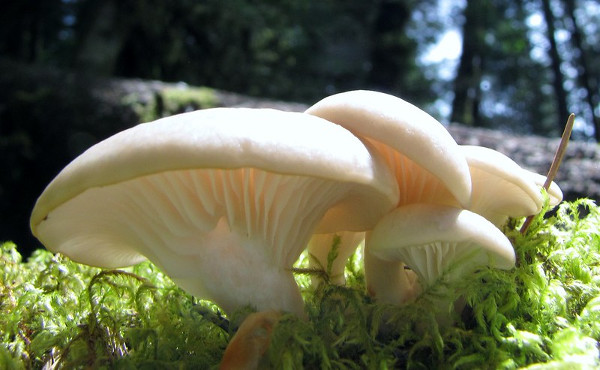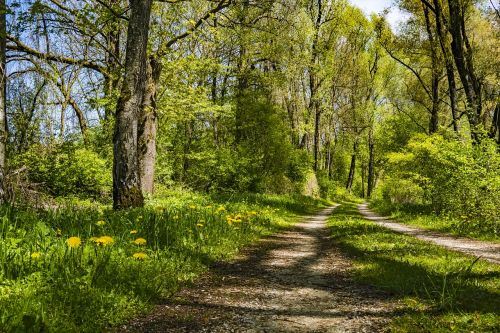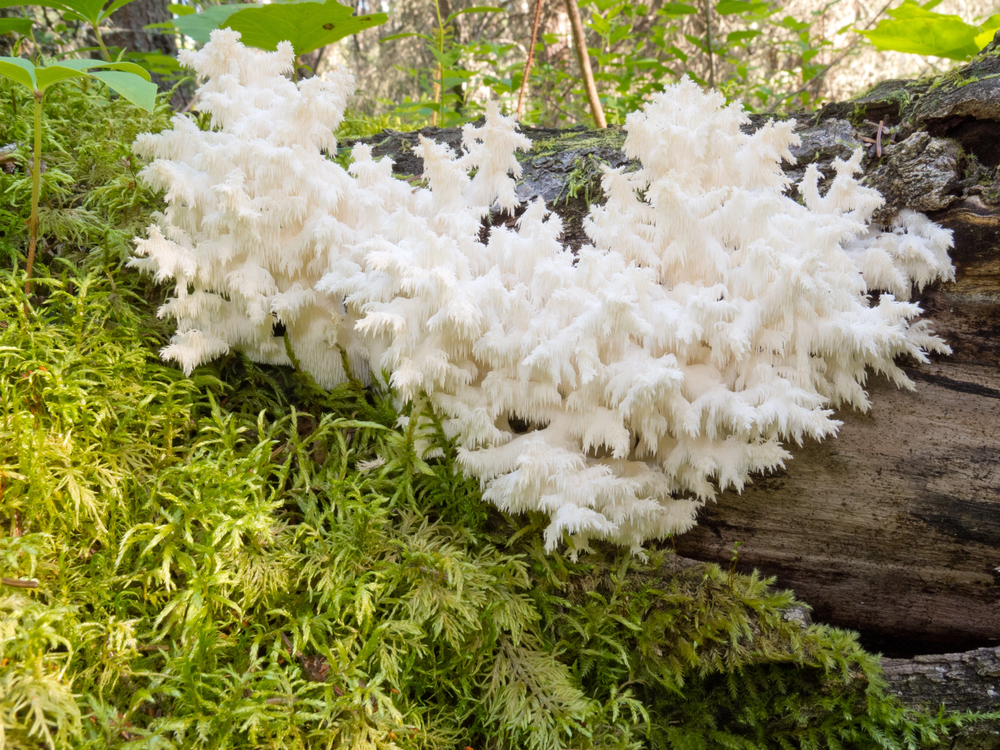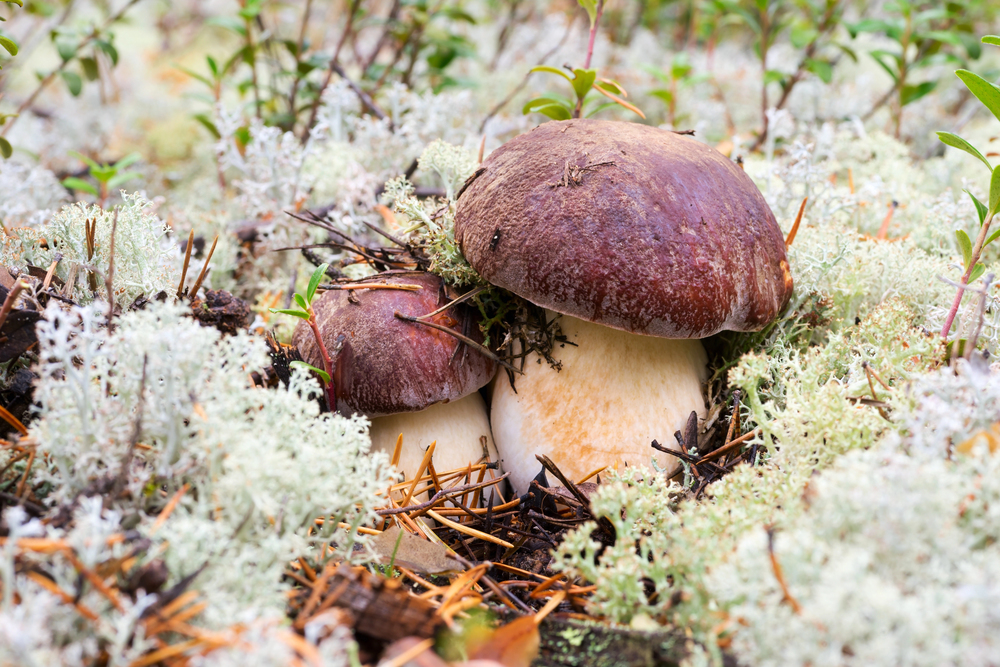The identification of oyster mushrooms changes significantly with the seasons, necessitating an understanding of their growth patterns and key morphological traits. In the spring and fall, these fungi thrive on decaying hardwoods, often catching the attention of foragers with their unique fan-shaped caps. Nevertheless, the ever-present risk of misidentification with similar species emphasizes the importance of careful observation and knowledge. As we investigate the intricacies of recognizing oyster mushrooms throughout the year, it becomes evident that mastering this skill involves more than just casual observation—it demands a deeper engagement with nature’s subtleties.
Key Takeaways
- Oyster mushrooms fruit in spring, summer, fall, and winter under varying temperature and humidity conditions, generally between 50-75°F.
- Their distinct fan-shaped caps can be white, gray, tan, or dark brown, helping with seasonal identification.
- Look for decurrent gills that extend down the stem and are typically white to cream in color.
- Preferred habitats include dead hardwoods, especially beech, often in wooded areas during fruiting seasons.
- Use local field guides or mushroom apps for accurate species identification throughout the seasons.
General Characteristics of Oyster Mushrooms
Oyster mushrooms, known for their distinctive fan-shaped caps, exhibit a range of physical and ecological characteristics that aid in their identification. Their caps can vary in size from 2 to 30 centimeters in diameter and come in shades of white, gray, gray-yellow, tan, or dark brown. Typically decurrent, the gills are white to cream and extend down any present stem. If a stem is visible, it is often short, thick, and off-center, attaching laterally to wood.

These mushrooms thrive on dead or decaying trees, logs, and wood at various decay stages, with a preference for deciduous trees such as oak and beech. They require high humidity and dampness, frequently appearing in overlapping clusters or as shelves on humid wood. Fruit bodies are short-lived, emerging from mycelium hidden within soil or substrate, creating a bittersweet aroma reminiscent of benzaldehyde.
While identifying oyster mushrooms, it is vital to differentiate them from poisonous look-alikes like Angel’s Wings and Jack-O’-Lantern mushrooms. Verification of color and gill structure is important before consumption, emphasizing the significance of thorough environmental awareness, especially in polluted urban areas.
Seasonal Fruiting Patterns
During the year, oyster mushrooms exhibit distinct seasonal fruiting patterns that are influenced by temperature and humidity conditions. In spring, ideal temperatures range from 50-75°F, with initial fruiting occurring after warm, rainy days. This period is especially fruitful following the first hot weekend of spring, leading to a substantial find. Additionally, during this time, oyster mushrooms’ health benefits can attract more foragers interested in their nutritional value.
In summer, oyster mushrooms thrive in cool, humid conditions, preferably between 50-60°F with humidity around 80%. Rainy spells are vital; thus, the days after a good summer rain present an excellent opportunity for foragers. Nevertheless, temperatures above 75°F may hinder their growth.
As fall approaches, conditions again become favorable for oysters, particularly after the first frost. Suitable temperatures remain in the range of 50-75°F, with certain brown oyster mushrooms significantly fruiting during this season. Cold blue oysters, needing a cold shock, can fruit at lower temperatures as well.
Finally, winter fruiting is more common in warmer climates. Cold blue oyster mushrooms can appear after a cold shock, but typically, fruiting is rare in cold, dark conditions. On sunny winter days following rain, some species can still be found. Oyster mushrooms cultivated indoors can produce year-round, transcending seasonal limitations.
Identification Techniques for Foragers
Understanding the seasonal fruiting patterns of oyster mushrooms provides a foundation for foragers seeking these sought-after fungi. Successful identification hinges on key features, habitats, and sensory indicators. Below is a concise summary of these techniques.
| Key Features | Habitat | Identification Techniques |
|---|---|---|
| Cap Shape: Oyster or fan-shaped, 2-10 inches wide. | Preferred Substrate: Dead hardwood, especially beech. | Use of Field Guides: Consult region-specific resources. |
| Gill Structure: Decurrent gills, attached to the stem. | Common Environments: Forests and woodlands. | Mushroom Identification Apps: Utilize image recognition tools. |
| Stem Characteristics: Often absent or short, white in color. | Fruiting After Rain: Prolific after rainfall. | Expert Consultation: Contact local mycological societies. |
When identifying oyster mushrooms, look for their smooth caps, white to lilac-gray spore prints, and subtle anise-like smell. These mushrooms are easily cultivated, so foragers can also consider growing them at home if they prefer. Attention to detail is vital; examine gill structures and specific habitat locations. Employing a combination of field guides, trusted online databases, and expert advice guarantees safer foraging experiences. Remember, accuracy in identification not only improves personal enjoyment but protects our natural ecosystems.

Common Lookalikes to Avoid
Foragers must remain vigilant when encountering mushrooms that resemble oyster mushrooms, as several toxic species can pose serious health risks. One significant lookalike is the Jack-O-Lantern mushroom (Omphalotus olearius). This mushroom has a bright orange hue, which distinguishes it from the typically pale colors of oyster mushrooms. Remarkably, its gills run down the stem, akin to oyster mushrooms, but it is bioluminescent, glowing blue-green under low light. Consumption can lead to severe vomiting, cramps, and diarrhea.
Another poisonous counterpart is the Ghost Fungus (Omphalotus nidiformis), which likewise bears resemblance to oyster mushrooms. Found mainly in Japan and Australia, its white or cream-colored gills run down the stem. Like the Jack-O-Lantern, it is bioluminescent, creating a potential for confusion. Ingesting this species results in severe abdominal cramps and vomiting but is not lethal. Oyster mushrooms are commonly found growing on wooden logs, which can help differentiate them from these toxic look-alikes during foraging.
To guarantee safe foraging, closely examine color, gill structure, and bioluminescent properties. Utilizing local mycological societies for identification assistance and reputable field guides can significantly improve foraging safety. Always err on the side of caution when uncertain about mushroom identification.
Cultivation and Growing Tips
Cultivating oyster mushrooms can be a rewarding endeavor for both seasoned mycologists and beginners alike. To start, the selection of suitable substrate is vital. Options such as straw, cardboard, sawdust, and coffee grounds provide excellent nutrient sources. Utilizing JUNCAO technology can improve substrate quality by combining JUNCAO powder, wheat bran, and lime powder. The versatility of oyster mushrooms allows them to thrive on various substrates, making them a popular choice for growers.
Proper environmental conditions promote mycelial and fruiting body growth. The ideal temperature range for mycelia is 20-25℃, while fruiting thrives at 15-24℃. Maintaining a dampness level of 56-65% is fundamental during mycelia growth. Humidity should be kept at 60-70% during the spawn run.
| Cultivation Step | Details |
|---|---|
| Substrate Preparation | Straw, cardboard, sawdust, or coffee grounds |
| Temperature Range | 20-25℃ for mycelia, 15-24℃ for fruiting |
| Humidity Level | 60-70% during spawn run |
| Harvest Timing | 7-10 days after covering |
Inoculation involves adding grain spawn at a rate of 10% to the substrate within a sterile environment. Effective harvesting occurs 7-10 days post-soil covering when mushrooms are about 80% mature. To promote oxygen flow, cut holes in the bag every 4-6 inches.



